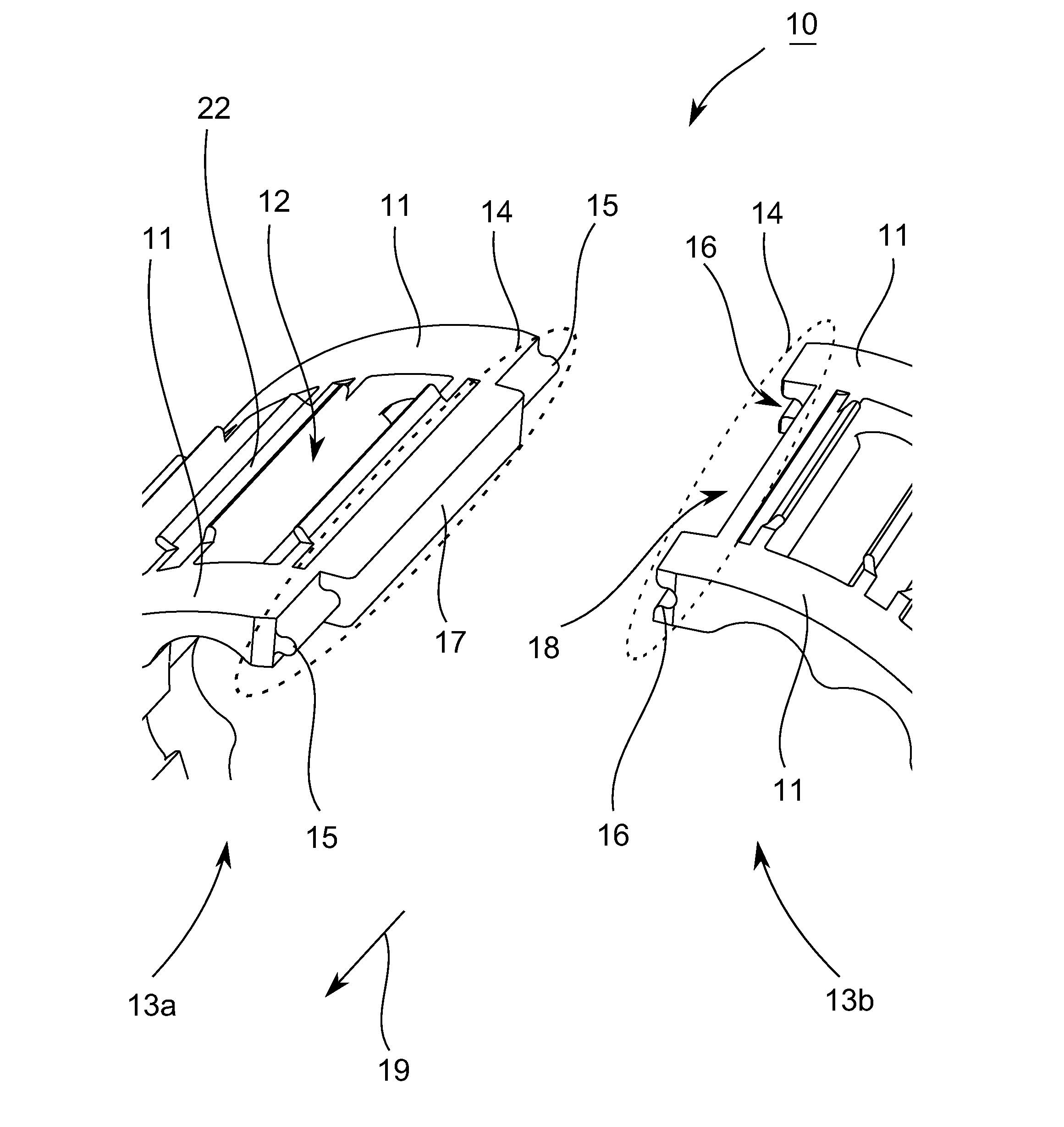Split bearing cage for rolling element bearing
a bearing cage and rolling element technology, applied in the direction of roller bearings, shaft assemblies, mechanical equipment, etc., can solve the problems of low cage friction, heavy stress on the bearing cage during operation, chemical degradation under certain circumstances, etc., to achieve stable and/or loadable connection between the two bearing cage sections, and less rapid breakage of projections and/or openings
- Summary
- Abstract
- Description
- Claims
- Application Information
AI Technical Summary
Benefits of technology
Problems solved by technology
Method used
Image
Examples
Embodiment Construction
[0028]FIG. 1 shows a portion of a three-dimensional representation of a stepped split bearing cage 10 according to an exemplary embodiment of the present teachings.
[0029]The bearing cage 10 has two axially spaced side rings 11, each extending in the circumferential direction of the bearing cage 10. Pockets 12 for accommodating or guiding rolling elements (not shown for purposes of clarity) can be disposed between the side rings 11. The rolling elements may be, without limitation, e.g., balls, cylindrical rollers, tapered rollers, spherical rollers, etc. The split bearing cage 10 is split in the circumferential direction along at least one cutting line (line of separation), thereby forming a split or gap between first and second bearing cage sections 13a, 13b. It should be understood that the first and second bearing cage sections 13a, 13b may be integrally connected together without a seam therebetween on ends opposite of the split or gap. Also, as referred to hereinbelow, the “tang...
PUM
| Property | Measurement | Unit |
|---|---|---|
| Length | aaaaa | aaaaa |
Abstract
Description
Claims
Application Information
 Login to View More
Login to View More - R&D
- Intellectual Property
- Life Sciences
- Materials
- Tech Scout
- Unparalleled Data Quality
- Higher Quality Content
- 60% Fewer Hallucinations
Browse by: Latest US Patents, China's latest patents, Technical Efficacy Thesaurus, Application Domain, Technology Topic, Popular Technical Reports.
© 2025 PatSnap. All rights reserved.Legal|Privacy policy|Modern Slavery Act Transparency Statement|Sitemap|About US| Contact US: help@patsnap.com



